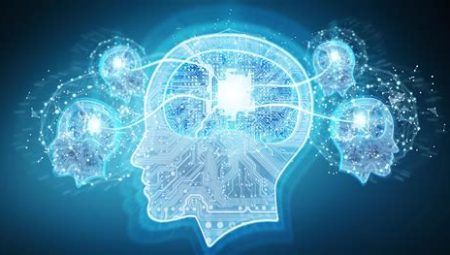The landscape of higher education is rapidly evolving, and digital disruption is at the heart of this transformation. As American universities navigate the complexities of the 21st-century learning environment, the need for digital transformation programs has become increasingly pronounced. In this blog post, we will delve into the various aspects of digital disruption in higher education, exploring the necessity for digital transformation in American universities and the successful case studies that have paved the way for change. We will also examine the practical implementations of digital technologies in university administration and operations, as well as the ways in which digital transformation can enhance student learning experiences. Additionally, we will address the crucial role of data analytics in informing decision-making processes and the integration of online learning platforms into the curriculum. Furthermore, we will explore the challenges and risks associated with digital transformation, and how universities can adapt and measure the impact of these changes on their overall performance. Join us as we unravel the intricate world of digital transformation in American universities.
Table of Contents
Understanding digital disruption in higher education
Digital disruption in higher education refers to the impact of digital technologies on traditional educational models and the need for institutions to adapt to these changes. As technology continues to evolve, it has become increasingly important for universities to understand and anticipate the potential disruptions it may bring to the way education is delivered and accessed.
Online learning platforms and resources have challenged the traditional classroom setting, providing greater accessibility and flexibility for students. This shift has disrupted the traditional higher education landscape, requiring institutions to rethink their approaches to teaching and learning.
Understanding digital disruption involves recognizing the changes in student preferences and behavior, as well as the growing demand for personalized learning experiences and innovative educational tools. Universities must adapt to these changes in order to remain relevant and competitive in the digital age.
By understanding the implications of digital disruption in higher education, institutions can proactively develop strategies to embrace and leverage digital technologies, ultimately enhancing the overall educational experience for both students and faculty.
Assessing the need for digital transformation in American universities
With the rapid advancements in technology, American universities are facing the pressing need to embrace digital transformation to stay relevant in the 21st century. The traditional methods of teaching, learning, and administration are no longer sufficient to meet the demands of today’s digital world. As a result, there is an urgent need to assess the current state of digital readiness within American universities.
Many universities are finding themselves falling behind in terms of digital capabilities and infrastructure. This has led to a growing recognition of the need for a comprehensive assessment of the existing digital landscape in higher education institutions across the country. By conducting thorough evaluations, universities can identify areas that require improvement and develop a strategic roadmap for digital transformation.
Assessing the need for digital transformation also involves understanding the specific challenges and opportunities that arise in the context of American universities. From outdated IT systems to resistance to change among faculty and staff, there are various obstacles that need to be addressed in order to effectively implement digital transformation initiatives.
Furthermore, the assessment process should take into account the diverse needs and priorities of different departments and disciplines within universities. It is essential to create tailored strategies that align with the unique requirements of various academic and administrative units, ensuring a cohesive and integrated approach to digital transformation.
Exploring successful digital transformation case studies in higher education
In recent years, higher education institutions have been undergoing a significant transformation as they adapt to the digital age. Many universities have successfully implemented digital technologies to enhance their operations, improve student learning experiences, and make informed decisions through data analytics.
One case study that stands out is the digital transformation journey of Harvard University. By integrating online learning platforms and resources in their curriculum, Harvard has been able to reach a wider audience of students from all over the world. This has not only increased their enrollment numbers but has also improved the diversity and inclusivity of their student body.
Another successful case study is the adaptation of faculty roles and professional development at Stanford University. Faculty members have been trained to leverage digital tools and resources to deliver more engaging and interactive lectures. This has led to an improvement in student engagement and overall satisfaction with the learning experience.
Measuring the impact of digital transformation on university performance is crucial, and the case study of MIT provides valuable insights. By leveraging data analytics, MIT has been able to make informed decisions that have positively impacted their research output, student retention rates, and overall institutional success.
Implementing digital technologies in university administration and operations
Integrating digital technologies in university administration and operations is essential for modernizing and streamlining various processes within academic institutions. Embracing digital transformation can enable universities to improve efficiency, enhance communication, and optimize resource management.
By implementing robust digital technologies such as cloud-based systems, automated workflows, and data analytics tools, universities can revolutionize their administrative and operational functions. This can result in cost savings, faster decision-making, and a more agile response to changing demands.
Furthermore, the adoption of digital technologies in university administration can facilitate better collaboration among staff members, promote transparency in processes, and ensure compliance with regulations and standards. From student enrollment and financial management to academic scheduling and campus facility maintenance, digital solutions offer a wide range of benefits for higher education institutions.
Overall, the successful implementation of digital technologies in university administration and operations requires strategic planning, investment in appropriate infrastructure, and ongoing support and training for staff members. By embracing digital transformation, universities can position themselves as forward-thinking, innovative, and better equipped to meet the evolving needs of students and academic stakeholders.
Enhancing student learning experiences through digital transformation
As technology continues to advance, it has become increasingly important for higher education institutions to embrace digital transformation in order to enhance the learning experiences of their students. Digital transformation involves the integration of digital technologies into various aspects of university operations, including teaching and learning. When done effectively, it can lead to a more engaging and personalized learning experience for students.
One way in which digital transformation can enhance student learning experiences is through the use of online learning platforms and resources. These platforms provide students with access to a wide range of educational materials, allowing them to learn at their own pace and in a way that best suits their individual learning styles. Additionally, online platforms can facilitate collaboration and communication among students, further enhancing their learning experiences.
Data analytics also play a key role in enhancing student learning experiences through digital transformation. By collecting and analyzing data on student performance and engagement, universities can gain valuable insights into the effectiveness of their teaching methods and learning resources. This data can be used to make informed decisions that support student success and improve overall learning outcomes.
Another important aspect of enhancing student learning experiences through digital transformation is the adaptation of faculty roles and professional development for the digital age. It is essential for faculty members to receive training and support in utilizing digital technologies effectively in their teaching practices. When faculty are able to integrate technology in a meaningful way, students are more likely to have positive and impactful learning experiences.
Leveraging data analytics for informed decision-making in universities
Universities are constantly facing the challenge of making informed decisions that will impact students, faculty, and the overall institution. One way to tackle this challenge is by leveraging data analytics to gain valuable insights into various aspects of university operations.
By analyzing data on student performance, enrollment trends, faculty productivity, and financial management, universities can make informed decisions that are backed by evidence and insights rather than assumptions and guesswork.
Implementing data analytics tools and platforms can provide university administrators with real-time access to key performance indicators and trends, allowing them to identify areas for improvement and opportunities for growth.
Moreover, by harnessing the power of data analytics, universities can optimize resource allocation, improve operational efficiency, and enhance the overall student experience, leading to better outcomes for the institution and its stakeholders.
Integrating online learning platforms and resources in curriculum
Integrating online learning platforms and resources in curriculum has become increasingly important in today’s digital age. With the advancement of technology, universities are tasked with adapting their teaching methods to include online resources and platforms that can enhance the learning experience for students.
By incorporating online learning platforms into the curriculum, universities can provide students with access to a wide range of resources, including videos, interactive quizzes, and virtual classroom sessions. This allows for a more dynamic and engaging learning experience that can cater to different learning styles and preferences.
Furthermore, integrating online learning platforms in the curriculum can also help in creating a more flexible and accessible learning environment for students. With the option to access course materials online, students can have the freedom to learn at their own pace and convenience, reducing the barriers created by traditional classroom settings.
Overall, the integration of online learning platforms and resources in the curriculum can greatly enhance the educational experience for students and offer opportunities for universities to innovate their teaching methods.
Adapting faculty roles and professional development for the digital age
In today’s rapidly evolving digital landscape, it is essential for higher education institutions to adapt faculty roles and prioritize professional development to meet the demands of the digital age. As technology continues to advance, educators must embrace new tools and teaching methods to effectively engage with students and support their learning.
Digital literacy is becoming increasingly important for faculty members, as they are expected to integrate digital tools and platforms into their teaching practices. Professional development programs can help them build the skills needed to effectively use technology in the classroom, whether through online learning platforms, data analytics, or other digital resources.
Furthermore, as the role of educators continues to shift in the digital age, institutions must recognize the need for ongoing professional development and support. This includes opportunities for training, collaboration, and mentorship to help faculty members stay current and adaptable in their teaching approaches.
By adapting faculty roles and investing in professional development, universities can ensure that their educators are equipped to deliver high-quality, digitally enhanced learning experiences that meet the needs of today’s students.
Addressing challenges and risks associated with digital transformation
Digital transformation in higher education presents numerous challenges and risks that must be carefully addressed in order to successfully navigate this complex process. One of the major challenges is the resistance to change from staff and faculty who may be accustomed to traditional methods of teaching and administration. It is essential for university leaders to effectively communicate the benefits of digital transformation and provide the necessary support and training to help faculty members embrace new technologies and processes.
Another significant challenge is the potential for data breaches and security vulnerabilities as universities increasingly rely on digital technologies to store and manage sensitive information. Cybersecurity must be a top priority, and institutions need to invest in robust security measures and protocols to safeguard their data and protect the privacy of students, faculty, and staff.
Additionally, the rapid pace of technological advancements means that universities must constantly evolve and adapt to new tools and platforms. This can create a significant financial burden, as institutions may need to allocate substantial resources to keep up with the latest technologies and ensure that their infrastructure and systems remain up to date and effective.
Furthermore, digital transformation can widen the digital divide and exacerbate existing inequalities among students and faculty. It is crucial for universities to make sure that everyone has equal access to digital resources and support, regardless of their background or circumstances. This may require targeted interventions and policies to ensure that no one is left behind in the digital age.
Measuring the impact of digital transformation on university performance
In today’s rapidly evolving digital landscape, universities are increasingly turning to digital transformation to modernize operations, improve efficiency, and enhance overall performance. As higher education institutions continue to adopt digital technologies, it is essential to measure the impact of these transformations on various aspects of university performance.
One of the most critical areas to assess is the student experience. Digital transformation can greatly impact how students engage with course materials, communicate with professors, and access resources. By gathering data on student satisfaction, academic achievement, and retention rates, universities can measure the effectiveness of their digital initiatives in improving the overall educational experience.
Another key metric for measuring the impact of digital transformation is administrative efficiency. From streamlined enrollment processes to automated financial aid systems, digital technologies can significantly enhance the operational efficiency of universities. By analyzing data on cost savings, staff productivity, and error rates, institutions can determine the impact of digital transformation on administrative performance.
Furthermore, it is important to assess the strategic outcomes of digital initiatives in higher education. Universities should evaluate the impact of digital transformation on research productivity, industry partnerships, and overall institutional reputation. By gathering data on research output, technology commercialization, and rankings, universities can measure the long-term impact of digital transformation on their performance and competitiveness.






